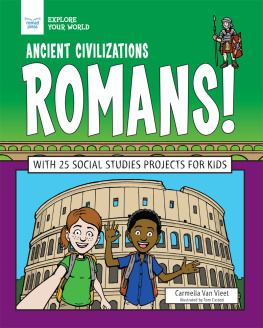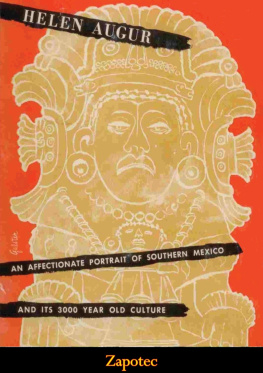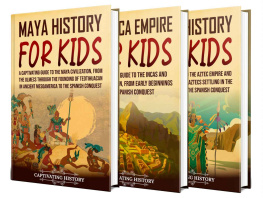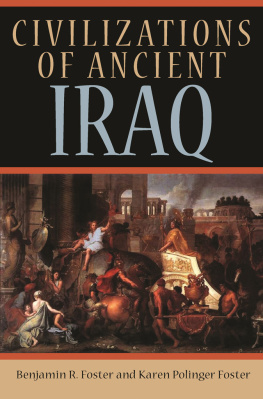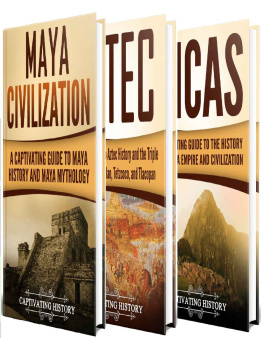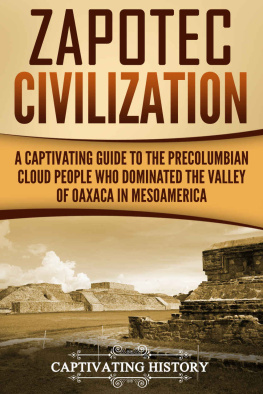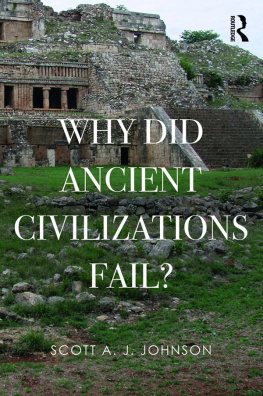

Published in 2015 by Britannica Educational Publishing (a trademark of Encyclopdia Britannica, Inc.) in association with The Rosen Publishing Group, Inc.
29 East 21st Street, New York, NY 10010
Copyright 2015 The Rosen Publishing Group, Inc., and Encyclopaedia Britannica, Inc. Encyclopaedia Britannica, Britannica, and the Thistle logo are registered trademarks of Encyclopaedia Britannica, Inc. All rights reserved.
Distributed exclusively by Rosen Publishing.
To see additional Britannica Educational Publishing titles, go to http://wwww.rosenpublishing.com.
First Edition
Britannica Educational Publishing
J. E. Luebering: Director, Core Reference Group
Anthony L. Green: Editor, Comptons by Britannica
Rosen Publishing
Kathy Campbell: Editor
Nelson S: Art Director
Brian Garvey: Designer
Cindy Reiman: Photography Manager
Library of CongressCataloging-in-PublicationData
Byers, Ann, author.
Discovering ancient Mesoamerican civilizations/Ann Byers.First edition.
pages cm. (Exploring ancient civilizations)
Includes bibliographical references and index.
ISBN 978-1-6227-5844-9 (eBook)
1. Indians of MexicoJuvenile literature. 2. Indians of Central AmericaJuvenile literature. I. Title. II. Series: Exploring ancient civilizations.
F1219.B985 2015
930dc23
2014025498
Photo credits: Cover, pp. 1, 3 Jose Ignacio Soto/Shutterstock.com; pp. 7, 14 Encyclopdia Britannica, Inc.; pp. 9, 17, 23, 27 De Agostini/Getty Images; p. 10 Danita Delimont/Alamy; p. 12 Jacobo Zanella/Moment Open/Getty Images; p. 13 DEA/C. Sappa/De Agostini/Getty Images; p. 18 DEA/G. Dagli Orti/De Agostini/Getty Images; p. 19 Danita Delimont/Gallo Images/Getty Images; p. 21 Private Collection/Bridgeman Images; p. 25 Dorling Kindersley/Getty Images; p. 28 Richard Maschmeyer/Robert Harding World Imagery/Getty Images; p. 30 The Bridgeman Art Library/Getty Images; pp. 31, 37 Werner Forman/Universal Images Group/Getty Images; p. 32 BornaMir/iStock/Thinkstock; p. 33 Library of Congress, Washington, D.C. (neg. no. LC-USZC4-73); p. 36 Maxime Vige/E+/Getty Images; p. 39 George Holton/Photo Researchers; p. 41 Michael & Jennifer Lewis/National Geographic Image Collection/Getty Images; p. 42 Independent Picture Service/Universal Images Group/Getty; cover and interior graphics to mua to/Shutterstock.com (patterned banners and borders), HorenkO/Shutterstock.com and Freckles/Shutterstock.com (background textures).
CONTENTS
I n ancient times, the land from central Mexico to northern Honduras was home to some of the most advanced civilizations on the American continents. This territory, called Mesoamerica, covered about half of modern-day Mexico, all of Guatemala and Belize, and parts of El Salvador and Honduras. The people behind these sophisticated cultures were the native peoples of the Americasthe Indians.
Much like in ancient Egypt, Mesopotamia, and China, the Indians of Mesoamerica advanced from primitive ways to complex societies. Beginning with almost nothing, they eventually established elaborate cities, built massive monuments, and created beautiful works of art. They learned how to grow food in tropical rain forests and on mountain slopes. They developed customs and laws and made amazing discoveries in astronomy and math.
What were these ancient people like? What did they believe? How did they live? Fortunately, they left records. The records are the items they made: their buildings, their artwork, and their picture writing. From these, archaeologists have pieced together a picture of fascinating people who began to civilize the continent more than 3,000 years ago.

This map shows the locations of ancient and modern cities in Mesoamerica. In addition to the Aztec and the Maya, the Olmec, Zapotec, Toltec, and other peoples developed civilizations in this area in ancient times.
T he first people to come to Mesoamerica were hunter-gatherers. Hunter-gatherers live in small, family-based groups called bands, which move from place to place looking for food. They kill wild animals and collect the fruit of edible plants. When they exhaust the supply in one location, they move to another. They continue this nomadic way of life until they figure out how to grow food. Once they learn to farm, life changes dramatically. They no longer have to move; they settle, forming small villages.
Because they spend less time getting food, they can pursue other activities. They find ways to use the resources in their environment to make their lives easier and more enjoyable. Over time they develop a division of labor; some people concentrate on farming and others make pots, baskets, jewelry, and other items. When people cooperate on projects, they develop rules for working together. The villages eventually grow into cities, the rules into laws, and the division of labor into social classes. These developments are some of the characteristics of a civilization.
The rise from farming to civilization can take thousands of years. In Mesoamerica, Indians began to experiment with raising plants as early as 8000 BCE . By 5000 BCE they had begun using corn as a food. Squash, beans, and chili peppers were other early crops. By 1500 BCE some Mesoamerican farmers were producing enough food that the people were ready to live a fully settled life.

Mesoamerican farmers dug holes and planted single seeds of corn, beans, and squash together in each hole. The corn provided stalks for the bean plants to climb, and the corn and beans shaded the squash, which grew close to the ground.
The Mother Culture: The Olmec
The first great civilization in Mesoamerica was that of the Olmec. These people settled along the hot, humid coast of the Gulf of Mexico in what are today the Mexican states of Veracruz and Tabasco. By about 1200 BCE their simple farming villages had evolved into a civilization.

The Olmec settlement of La Venta, on the Gulf coast of Mexico, was originally built on an island in the Tonal River. Today it is part of a large swamp. A 100-foot- (30-meter-) high clay mound, shaped like a fluted cone, towers over the site. Some archaeologists believe that it represents a volcano.
The Olmec built large towns where they came together to trade and hold religious ceremonies. The most important were San Lorenzo, La Venta, and Tres Zapotes. San Lorenzo, the oldest site, is famous for its extraordinary stone monuments. La Venta is marked by great mounds, a narrow plaza, and several other ceremonial enclosures. Between about 800 and 400 BCE it was the most important settlement in Mesoamerica.
Olmec culture faded by about 400 BCE . Its influence, however, spread north to central Mexico and south to Central America.
Classic Civilizations
As the Olmec declined, other civilizations rose. Several reached their peak during what is called the Classic era of ancient Mesoamerican civilization. This period lasted from about 100 to 900 CE .









